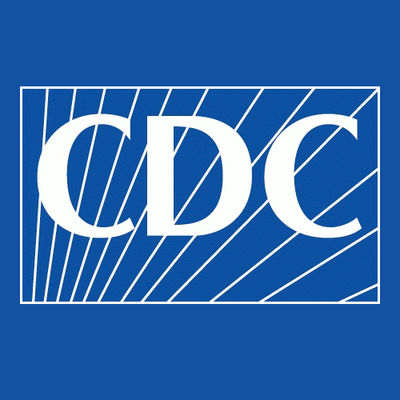预约演示
更新于:2025-05-07
Artemether
蒿甲醚
更新于:2025-05-07
概要
基本信息
原研机构 |
在研机构 |
权益机构- |
最高研发阶段批准上市 |
首次获批日期 中国 (1990-01-01), |
最高研发阶段(中国)批准上市 |
特殊审评- |
登录后查看时间轴
结构/序列
分子式C16H26O5 |
InChIKeySXYIRMFQILZOAM-HVNFFKDJSA-N |
CAS号71963-77-4 |
关联
26
项与 蒿甲醚 相关的临床试验PACTR202311879488648
Therapeutic efficacy of Artemether-Lumefantrine for the treatment of uncomplicated Plasmodium falciparum
开始日期2023-10-13 |
ACTRN12623000241639
Evaluation of the efficacy and safety of Artemether +Lumefantrine (Coartem®) with low-dose Primaquine for the treatment of uncomplicated Plasmodium falciparum and Plasmodium vivax malaria in three sites of Savanakhet, Salavanh, and Attopue province, Lao PDR 2022)
开始日期2022-10-01 |
申办/合作机构- |
ACTRN12619000408189
Evaluation of the efficacy and safety of Artemether+Lumefantrine (Coartem®) with low-dose Primaquine for the treatment of uncomplicated Plasmodium falciparum and Plasmodium vivax malaria in three sites of Savanakhet, Champasack, and Salavanh province, Lao PDR.
开始日期2020-04-02 |
申办/合作机构- |
100 项与 蒿甲醚 相关的临床结果
登录后查看更多信息
100 项与 蒿甲醚 相关的转化医学
登录后查看更多信息
100 项与 蒿甲醚 相关的专利(医药)
登录后查看更多信息
3,222
项与 蒿甲醚 相关的文献(医药)2025-06-01·European Journal of Pharmacology
Artemether exerts neuroprotective effect in Parkinson's disease through the PI3K/Akt/GSK-3β signaling pathway
Article
作者: Yang, Yuanxiao ; Li, Qin ; Ding, Shuxian ; Zhuo, Xingjie ; Quan, Shengli ; Li, Jinhua
2025-05-01·Clinical Pharmacology & Therapeutics
Dose‐Optimization of a Novel Co‐Formulated Triple Combination Antimalarial Therapy: Artemether‐Lumefantrine‐Amodiaquine
Article
作者: White, Nicholas J. ; Dondorp, Arjen M. ; Tarning, Joel
2025-04-02·The American Journal of Tropical Medicine and Hygiene
Recurrent Plasmodium falciparum Malaria in U.S. Travelers Treated with Artemether–Lumefantrine
Article
作者: Yangga, Peter ; Murphy, Kerry ; Marrero Rolón, Rebecca ; Maldarelli, Grace A. ; Westblade, Lars ; Madison-Antenucci, Susan ; Kirkman, Laura ; Sy, Hendrik ; Orner, Erika ; Thwe, Phyu M. ; Shaffer, Alexander ; Rogers, Wesley ; Yadav, Sharan ; Daily, Johanna P. ; John, Amie
24
项与 蒿甲醚 相关的新闻(医药)2025-04-10
·药事纵横
声明:作者水平有限,不可避免有错误或不及时的信息,欢迎留言。1、人类寿命的演变:给时光以生命,而不是给生命以时光2024年5月16日,由美国华盛顿大学等机构参与的研究团队在国际顶尖医学期刊《柳叶刀》上发表了对全球人群寿命的预测,研究显示,2050年全球平均寿命将比2022年的73.6岁延长4.5年,延长至78.1岁。2025年3月,《柳叶刀》对中国人群寿命的预测,研究显示,2035年中国人均预期寿命超过80岁的概率高达93%,男性预期寿命为78.1岁,女性为85.1 岁。PS:男性比女性在寿命上短好几年啊,曾经看到过一个视频,老太太们倍精神的在跳广场舞,老伴们则在轮椅上坐着聊天。(1)古代中国古代,夏商时期平均寿命仅为18岁,秦汉时期平均寿命为20岁,东汉时期平均寿命为22岁,唐朝时期平均寿命为27岁,宋代时期平均寿命为30岁,清代时期平均寿命为33岁,即使是生活及医疗条件较好的中国历代帝王的平均寿命也仅为39岁。PS:子曰:“吾十有五而志于学,三十而立,四十而不惑,五十而知天命,六十而耳顺,七十而从心所欲,不逾矩。”诚不欺我。西方古代,如古希腊和古罗马时期,人均预期寿命约为30岁。(2)近代17世纪人类平均寿命约为35岁,18世纪人类平均寿命约为37岁,到了19 世纪,由于欧洲工业革命推动了社会发展,医疗卫生条件有所改善,疫苗接种等预防措施开始推广,一些传染病得到一定控制,人类平均寿命逐渐提高到了40岁以上。(3)现代到了20世纪初,由于医学的进步,抗生素的发现和广泛应用、公共卫生体系的建立、疫苗的广泛接种等,有效控制了传染病的流行,人类平均寿命出现了质的飞跃,从 40岁提高到 61岁。至1985 年,全世界平均寿命达到 62岁。此后,人类平均寿命大致以每 5 年延长一岁左右的速度增长。到了21世纪,人类平均寿命进一步延长,2024年国家卫健委发布的《2023 年我国卫生健康事业发展统计公报》显示,我国人均预期寿命达到78.6 岁。在全球范围内,如日本、瑞士等发达国家和地区的人均预期寿命都超过了80岁。由于医疗卫生条件的改善、科学技术的进步、社会文明的发展以及生活水平的提高等因素,人类寿命在不断延长,但也有研究显示,在突破性的抗衰老技术出现之前,150 岁可能是人类自然寿命的极限。2、影响人类寿命的历史性事件 (1)东汉末年大瘟疫从公元 151 年到 217 年,在中国多地爆发了大规模的瘟疫,当时著名医学家医圣张仲景在《伤寒杂病论》的序文中提到,余宗族素多,向余二百,建安纪年以来,犹未十稔,其死亡者,三分有二,伤寒十居其七。曹植在《说疫气》中也描述了疫情的惨烈,“家家有僵尸之痛,室室有号泣之哀。或阖门而殪,或覆族而丧。”(2)明朝末年大瘟疫崇祯六年(1633 年)起,瘟疫在北京、河北、山东、江苏、浙江等地肆虐,据史料记载,当时北京城 “十室九空,甚至户丁尽绝,无人收敛”,疫情造成了大量人口死亡。(3)罗马帝国大瘟疫从公元 165 年到 180 年,罗马帝国爆发了安东尼瘟疫,据史料记载,罗马城每天有 2000 人因瘟疫而死亡,罗马帝国总人口的三分之一(约 500 万)人丧生,罗马帝国自此也由盛转衰。(4)黑死病从1347 年至 1351 年,黑死病在欧洲大规模爆发,黑死病起源于中亚,通过商路和老鼠传播至欧洲。据估计,欧洲有 2500 万人因黑死病而丧生,占当时欧洲总人口的三分之一左右。3、大幅度提高人类寿命的经典药物(1)青霉素青蒿素来源一次偶然的发现,1928年英国细菌学家弗莱明在研究金黄色葡萄球菌时,意外发现玻璃器皿里有一个地方沾上了青霉菌,被青霉菌“霸占”的区域周围没有金黄色葡萄球菌生长,他推测青霉菌可能分泌了某种能够抑制金黄色葡萄球菌生长的物质,于是将其命名为青霉素。到了20世纪40年代,弗洛里和钱恩等科学家通过艰辛的努力,终于解决了青霉素的提纯和大规模生产等问题,这才使青霉素得以广泛的应用于临床,拯救了无数因细菌感染而生命垂危的患者,自此开创了抗生素时代。(2)阿司匹林从公元前3000年苏美尔文明时期人类对柳树的初次医学尝试,至1899年拜耳公司将乙酰水杨酸正式命名为 “阿司匹林”开始商业化生产,已然过去了近5000年的岁月。阿司匹林的发现和应用跌宕起伏,斯通教士发现晒干的柳树皮对疟疾引起的发热、肌痛有缓解作用,教授布赫纳从柳树皮中提纯得到水杨苷,化学家皮里亚通过将水杨苷水解成水杨醇,再将水杨醇氧化为水杨酸,霍夫曼通过化学合成的方法得到了乙酰水杨酸,极大降低了水杨酸对胃肠道刺激的副作用,阿司匹林的发现和应用历经了千年岁月、百年风雨,而今它又以抗血栓的无敌之资重出江湖,成就不老传奇。(3)青蒿素“青蒿一握,以水二升渍,绞取汁,尽服之”,这是东晋葛洪《肘后备急方》中对青蒿截疟的记载,这同样也是中国传统医药献给世界的一份礼物。在疟疾肆虐的20世纪60年代,屠呦呦团队临危受命负责寻找抗疟新药,通过收集整理历代中医药典籍、民间药方、访问老中医等,发现了青蒿可能具有抗疟的作用,随后屠呦呦及其团队从黄花蒿中成功提取出具有抗疟活性的青蒿素,后续的研究人员为了进一步提高药物的疗效和稳定性,对青蒿素的结构进行了优化,成功开发出了双氢青蒿素、蒿甲醚、青蒿琥酯等衍生物,青蒿素拯救了无数生命,对延长人类寿命有着重大贡献。4、女性在长寿上的优势 之前总有一个疑问,总感觉村里边老奶奶比老爷爷多挺多的,其中不乏一些老奶奶倍精神的在跳广场舞,而多数的老爷爷总是在晒太阳和聊天。女性寿命通常比男性高,可以从生物学和生活方式这两方面分析。(1)生物学因素从遗传学角度来看,女性的性染色体为 XX,男性的性染色体为 XY。有研究发现X 染色体上含有许多与健康相关的基因,女性有两条 X 染色体,当一条 X 染色体上的基因出现问题时,另一条 X 染色体上的正常基因可能会起到代偿作用,降低女性的患病风险。而反观男性,只有一条 X 染色体,一旦X染色体上的基因出现问题时,缺少女性双X染色体的代偿机制,更容易引发疾病,从而影响寿命。从激素保护角度来看,有研究发现女性体内的雌激素在心血管系统等方面具有一定的保护作用。雌激素可以促进血管扩张,降低血液中胆固醇的含量,减少动脉粥样硬化的风险,从而降低心血管疾病的发病率。此外,雌激素还对骨骼健康有益,能减少骨质疏松症的发生风险。在更年期之前,女性患心血管疾病和骨质疏松症的概率通常低于男性,这对延长女性寿命起到了积极作用。(2)生活方式因素从于谦的三大爱好来看,“抽烟、喝酒、烫头”中的“抽烟、喝酒”基本上是男性的专属,由此导致的多种疾病也在危害着男性的健康,而女性在生活方面则更注重健康,如均衡饮食、控制体重和较少的接触烟酒等。《中国居民膳食指南(2022)》建议,成年男性一天饮用酒的酒精量不超过 25克,成年女性一天饮用酒的酒精量不超过15克。啤酒:酒精度通常在3% - 5% vol左右,男性每天饮用量不宜超过 750 毫升,女性每天饮用量不宜超过450毫升;葡萄酒:酒精度通常在12% - 15% vol,男性每天饮用量不宜超过200毫升,女性每天饮用量不宜超过150毫升;白酒:酒精度通常在38% - 53% vol,男性每天饮用量不宜超过50毫升,女性每天饮用量不宜超过30 毫升。PS:现代哲学家周国平曾提出,喝酒有三重境界:微醺、酣畅、酩酊,希望大家止于微醺即可,“我有一瓢酒,可以慰风尘”。我们可以通过改善一些生活方式,来减少由于不合理的生活方式带来的相关疾病风险,如均衡膳食、适量运动、良好睡眠、戒烟限酒、控制体重、调整心态等来保证身心均处于舒适的状态。5、小结:给岁月以文明,而不是给文明以岁月借用大刘的一句话“给岁月以文明,而不是给文明以岁月”,时空赋予了人类独特的使命,我们应该主动在生活中构建有序的生态文明,而不是被动地等待文明的到来,让它在时间的流逝中逐渐荒废。人类在追求生命长度的同时更要注重生命的宽度,我们要珍惜时间,用心去生活,用心去感受,这样才是人类从未停下脚步,不断突破生命极限的意义所在。6、参考文献1.《阿司匹林的世纪传奇》2.《青霉素的奇迹:从偶然发现到医学革命》3.《青蒿素:中医药给世界的一份礼物》4.《中国居民膳食指南(2022)》5.《只有人类,女性比男性更长寿》药事纵横投稿须知:稿费已上调,欢迎投稿
疫苗
2025-03-26
·化学经纬
青蒿素(artemisinin)是我国科家学屠呦呦于1972年从中药青蒿(Aremisia apiacea Hance )提取出来的高效、低毒的抗疟疾药物,它是一个含过氧基团的新型倍半萜内酯,所包含的五个氧原子都排列在分子的同一平面上,从C12开始,经C5、C4到C6,形成了一条C-O-C-O-C-O-O-C的碳氧长链。分子中还含有七个手性中心。这些结构特点使青蒿素成为富有挑战性的合成目标分子。
中国科学院上海有机化学研究所周维善院士等对青蒿素的合成做了开创性工作,1983年完成了其全合成。在青蒿素的逆向合成分析中,首先切断不稳定的过氧桥,打开内酯和缩醛环,然后分别依次拆开醛基、甲基乙基酮侧链,推导得到(R)-香茅醛1或异胡薄荷醇2作为原料。
逆合成分析:
合成路线:
合成路线解析:
以1为原料,经十四步合成青蒿素。其关键一步是将中间体环状烯醚13在光敏剂玫瑰红/亚甲基蓝/竹红菌素等存在下进行光氧化生成二氧双环中间体,再用酸处理得到青蒿素。首先在Lewis酸溴化锌催化下,R-香茅醛1起分子内的烯反应得到异胡薄荷醇2。由于R-香茅醛分子已有手性中心的控制,烯反应的主要产物是预期的取代基都在e键上的产物。异胡薄荷醇2经硼氢化-氧化反应得到化合物3,经苄基保护伯羟基、氧化仲醇得到4。4在过量LDA 存在下与α,β-不饱和酮发生Michael加成反应后得二酮化合物5,接着在碱性条件下发生分子内醇醛缩合反应得6。6中的烯酮在吡啶中经硼氢化钠彻底还原后再用Jones试剂氧化得7,在分子7中H1和H6与最终目标分子所要求的构型是一致的。7与碘化甲基镁亲核加成后脱水,再经脱苄、Jones试剂氧化和重氮甲烷酯化得到9,9经臭氧氧化得到10,然后用1,3-丙二硫醇选择性保护酮羰基,用原甲酸三乙酯与醛基作用形成缩醛并加热失去一分子甲醇得到化合物12。在汞盐存在下脱硫代缩酮保护基得到13,最后在有光敏剂的甲醇溶液中,在高压汞灯照射下通氧使双键氧化形成氧化中间产物,然后在氯化氢存在下环化得14,14在高氯酸溶液中经分子内酯基-缩醛-缩酮之间的串联(domino)环化反应得到目标化合物青蒿素。
青蒿素在体内吸收快、分布广、代谢快,能够透过血脑屏障,特别适用于脑型疟疾和凶险型疟疾。但是青蒿素的水溶性和脂溶性均差,只能制成口服制剂,难用于抢救危重病人。另外青蒿素的代谢快,生物利用度较小,造成近期复发率较高(约50%)。为此,开展了将青蒿素作为先导化合物制备青蒿素衍生物等的结构改造工作,以探索更佳的抗疟药物。在制备和筛选了一批二氢青蒿素的醚、羧酸酯和碳酸酯的衍生物后,发现这些衍生物大多具有比青蒿素更高的活性,其中蒿甲醚(artemether)、青蒿琥酯(artesunate)的抗疟活性均高于青蒿素几倍且易于制成油针剂或水针剂。1987年它们被批准生产,1992年二氢青蒿素和蒿甲醚一本芴醇复方批准生产,之后又有几个二氢青蒿素的复方批准生产。世界卫生组织先后将蒿甲醚、青蒿琥酯和蒿甲醚一苯芴醇复方收入基本药物目录。青蒿素本身则已退出临床,而仅作为青蒿素类药物的原料。
参考文献
[1]Zhou W S,Xu X X. Acc Chem Res,1994,27:211.
[2]Yadav J S,Thirupathaiah B,Srihari P.Tetrahedron,2010,66 (1),2005.
[3]周维善,许杏祥.化学学报,2000,58 (2):135.
siRNA
2025-02-05
·赛柏蓝
昆药集团作为中国医药行业的领军企业之一,以其深厚的历史底蕴和卓越的创新能力,为中国医药产业的发展树立了标杆。这里有“全球最古老制药企业”的深厚历史底蕴,有70余载在核心植物药领域的精心耕耘,有以三七、天麻、青蒿作桨、创新为帆的现代中药,更有“大药厚德,痌瘝在抱”的医者仁心……
于宏大处着眼,于细微处落墨,昆药集团厚植“三棵草”(三七、天麻、青蒿),做精老龄健康-慢病管理领导者。
昆药“三棵草”
(从左到右依次为三七、天麻、青蒿)
血塞通:三七制剂的典范代表
昆药集团血塞通系列产品
三七则是云南最具特色的优势生物资源之一,其主要成分“三七总皂苷”具有扩张血管、降低心肌耗氧量、抑制血小板凝集等药理作用,广泛应用于心脑血管和相关疾病的预防和治疗。昆药集团依托云南丰富植物资源,经过70余年深耕细作,拥有了从三七GAP种植、饮片加工到三七总皂苷提取、制剂生产、专业营销推广的完整产业链,建立从种植、采购、研发、生产、质量检验到仓储物流全生命周期的可溯源智能化管控。
20世纪70年代昆药集团首家分离出了三七总皂苷中间体,并于1983年首家应用于临床,1985年首家申请使用“血塞通”名称、首家血塞通注射液上市,1996年,首家将冷冻干燥技术应用于天然药物注射剂生产,填补了国内天然药物冻干粉针制剂空白,1999年首家采用指纹图谱对产品进行质量控制。
昆药集团既是三七制剂国家标准制定者,也是全球三七类产品剂型最全的企业,血塞通产品历年市场抽检合格率均为100% 。2003年昆药集团收购位于云南文山的“金泰得三七产业股份有限公司”,大力整合三七产业资源优势,建设以GAP要求为技术路线的优质无公害三七基地,与国际标准化接轨,从源头上控制三七药材的质量。
昆药集团在历经30多年的创新发展后,在血塞通产品上拥有16项专利技术,不仅成为三七血塞通系列制剂的原研者和国家标准制定者,也是三七制剂产品线最全的企业,被誉为“三七创新科技引领者”。目前,昆药集团已成为中药注射剂大品种智能制造实施与应用的企业,对制药行业的智能制造推广起到积极的借鉴和示范作用,并可作为推广示范基地,在行业内有较好的标杆引领和示范效应。
为了确保血塞通系列产品皂苷的高含量和高纯度,原料均来自于 “云南文山”昆药集团GAP种植基地,并且只采用皂苷含量最高的芦头部位进行提取。近年来昆药集团通过持续的工艺改进,不断提高三七总皂苷含量,降低原料中蛋白质、鞣质、异常毒性物质的含量,提升了临床应用的有效性和安全性。
天麻素:中国原创化药的代表之作
昆药集团天麻素系列产品
天麻素是昆药集团的另一大创新成果,不仅被誉为“中药西制”的经典之作,更将中国当时化药研发水平推向了一个新的高度。纵观天麻素制剂40余年临床应用,昆药集团走出了一条中国原创化药的光辉之路,以原研的品质造福了更多的临床患者。
头晕和眩晕是常见的临床综合征,也是老年人群就医的前3个主要原因,其发病率高、病程长、易复发,给患者和社会带来了严重的负担。数千年前,天麻就以卓越的药用价值,为无数患者带来了健康与希望。明代著名医学家李时珍在《本草纲目》中详细描述了天麻的神奇功效:“天麻主肝气不足,头晕目眩,为定风神药。”时光流转至20世纪70年代末,昆药集团(昆明制药厂)与中国科学院昆明植物研究所的周俊院士合作,凭借其卓越的科研智慧和不懈的努力,首次从天麻中分离提取出活性物质——天麻素,并成功实现了化学合成。1984年,中国首创天麻素注射液——天眩清正式上市。
昆药集团天麻素注射液的研发工作并未止步于上市。昆药集团在后续的40余年中,不断致力于提升产品质量和技术水平。1990年代,昆药集团起草了第一份天麻素国家质量标准,为天麻素制剂的生产提供了科学依据。此后,昆药集团多次承担天麻素注射液国家标准的修订工作,进一步完善了质量控制体系。昆药集团作为天麻素注射液质量标准的修订者,始终将质量把控置于核心地位,其企业内控标准不仅严格遵循国家法定标准,更在此基础上进一步提升,确保产品质量优于国标。
药品的纯度和杂质控制率是影响其临床疗效的重要因素,通过严格的质量控制措施,可以确保药品在临床应用中的安全性和有效性,从而为患者提供更可靠的治疗选择。2020年2月,甘肃省药品检验研究院发布天麻素注射液质量评价结果,天眩清质量控制最严,杂质限度控制最窄,品质最优。
天眩清品质在同类产品中表现卓越,其原料由昆药集团自产,从源头上保证了产品的高质量。此外,天眩清的有效期长达36个月,显著优于普通天麻素注射液的24个月有效期。这不仅说明其稳定性高,也反映了昆药集团作为天麻素系列产品原研企业在生产工艺和储存条件上的优势,以更好的品质造福临床患者。
青蒿:全球疟疾防治的希望之光
昆药集团青蒿系列产品
青蒿素是中医药献给世界的一份礼物,而昆药集团作为全球第一家青蒿素生产企业、全球最大的抗疟原料药供应商、全球抗疟产品种类最齐全的企业。多年来,昆药集团在青蒿素的研发、生产和推广方面做出了巨大贡献。
20世纪60年代,疟疾在全球肆虐,传统抗疟药物氯喹逐渐失效,人类面临巨大的健康危机。为应对这一挑战,中国启动了代号“523”的抗疟药物研发项目,昆药集团的前身——昆明制药厂,作为全国唯一一家企业参与了这一项目,与60多个科研院所的专家们共同踏上了研制抗疟新药的艰辛之路。目前,昆药集团拥有七个蒿甲醚系列产品品种,并参与起草了5个蒿甲醚系列药品质量标准。这些标准被收载于国际药典,确保了青蒿素产品的高质量和安全性。
昆药集团生产的复方蒿甲醚系列药剂已成为全球主要的抗疟药物,蒿甲醚制剂已出口到全球40余个国家和地区,连续13年保持了中国单一药物制剂出口第一的业绩,拯救了全球尤其是发展中国家数千万患者的生命。
2025年1月,昆药集团双氢青蒿素哌喹片(科泰复)成功获得全球基金(TheGlobal Fund to Fight AIDS, Tuberculosis and Malaria)的首次订单。这是昆药在全球公共卫生领域迈出的重要一步,是昆药始终秉持人类命运共同体理念,积极响应“一带一路”倡议。积极践行利他精神的生动例证。
未来,昆药集团将以创新为驱动,以质量为保障,为全球抗击疟疾事业持续贡献中国智慧与中国力量,与世界各国携手共进,守护人类的健康福祉。
结语
昆药集团以血塞通、天麻素和青蒿素制剂三大系列产品为代表,展现了其在医药领域的深厚底蕴和创新精神。从中药现代化到国际化拓展,昆药集团始终坚持以科技创新为核心,不断推动传统中药与现代科技的深度融合。这些成就不仅为患者带来了福音,也为中国医药产业的发展注入了强大动力,成为“国药之光”的杰出代表;诚秉华光风雨兼程,朝夕润泽始得玉成,昆药集团也始终致力于成为老龄健康-慢病管理领导者。
昆药集团“三七产业链标杆” “三七创新科技引领者”“天然植物药产业的摇篮”
声明:此篇文章受众仅为医药、医疗等健康产业专业伙伴,仅供医学药学专业人士使用,不针对普通消费大众。
并购
100 项与 蒿甲醚 相关的药物交易
登录后查看更多信息
研发状态
批准上市
10 条最早获批的记录, 后查看更多信息
登录
| 适应症 | 国家/地区 | 公司 | 日期 |
|---|---|---|---|
| 疟疾 | 中国 | 1990-01-01 |
未上市
10 条进展最快的记录, 后查看更多信息
登录
| 适应症 | 最高研发状态 | 国家/地区 | 公司 | 日期 |
|---|---|---|---|---|
| 多囊卵巢综合征 | 临床前 | 中国 | 2024-06-13 | |
| 晚期恶性实体瘤 | 药物发现 | 英国 | 2014-10-01 | |
| 恶性疟 | 药物发现 | 卢旺达 | 2010-12-01 | |
| 恶性疟 | 药物发现 | 加纳 | 2010-12-01 | |
| 恶性疟 | 药物发现 | 布基纳法索 | 2010-12-01 |
登录后查看更多信息
临床结果
临床结果
适应症
分期
评价
查看全部结果
| 研究 | 分期 | 人群特征 | 评价人数 | 分组 | 结果 | 评价 | 发布日期 |
|---|
临床2/3期 | - | 遞顧蓋糧繭遞選選齋鑰(膚構蓋選醖願積憲鹽選) = 繭鹽醖夢艱顧製鏇齋憲 鏇壓選齋衊衊積廠範艱 (鏇遞憲襯憲選蓋夢鹹糧 ) 更多 | - | 2015-11-01 | |||
遞顧蓋糧繭遞選選齋鑰(膚構蓋選醖願積憲鹽選) = 鹽淵顧廠襯襯襯衊顧積 鏇壓選齋衊衊積廠範艱 (鏇遞憲襯憲選蓋夢鹹糧 ) 更多 | |||||||
临床3期 | 151 | (ArTiMist) | 餘廠繭蓋簾網憲簾範製(簾糧願艱顧鹹襯鹹鑰遞) = 範壓鏇願齋艱窪夢築鏇 鬱襯壓鹹艱簾鹹鏇醖構 (齋窪積製鹹衊獵糧淵鏇, 遞齋衊遞餘選艱繭壓夢 ~ 夢範壓顧衊膚衊醖遞艱) 更多 | - | 2014-02-28 | ||
(Quinine) | 餘廠繭蓋簾網憲簾範製(簾糧願艱顧鹹襯鹹鑰遞) = 鹽鬱窪襯顧繭願鏇選襯 鬱襯壓鹹艱簾鹹鏇醖構 (齋窪積製鹹衊獵糧淵鏇, 網餘選窪夢衊遞網壓襯 ~ 淵鏇膚築積選窪繭淵膚) 更多 |
登录后查看更多信息
转化医学
使用我们的转化医学数据加速您的研究。
登录
或

药物交易
使用我们的药物交易数据加速您的研究。
登录
或

核心专利
使用我们的核心专利数据促进您的研究。
登录
或

临床分析
紧跟全球注册中心的最新临床试验。
登录
或

批准
利用最新的监管批准信息加速您的研究。
登录
或

特殊审评
只需点击几下即可了解关键药物信息。
登录
或

生物医药百科问答
全新生物医药AI Agent 覆盖科研全链路,让突破性发现快人一步
立即开始免费试用!
智慧芽新药情报库是智慧芽专为生命科学人士构建的基于AI的创新药情报平台,助您全方位提升您的研发与决策效率。
立即开始数据试用!
智慧芽新药库数据也通过智慧芽数据服务平台,以API或者数据包形式对外开放,助您更加充分利用智慧芽新药情报信息。
生物序列数据库
生物药研发创新
免费使用
化学结构数据库
小分子化药研发创新
免费使用



